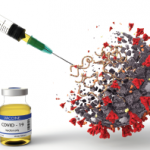Another group of immunizations that present carbohydrate/polysaccharide to the immune system are also acceptable for patients with immunodisease, Dr. Bingham said. These include pneumococcus, menincoccus, influenza B (Hib), and typhoid Vi injection.
However, there are a number of live and attenuated vaccines that rheumatologists should approach with extreme caution. In fact, “many of these are largely contraindicated in most immunosuppressed individuals,” Dr. Bingham said. These include varicella/zoster, the H1N1 flu mist, yellow fever, oral polio, the oral form of typhoid vaccines (Ty21a oral), vaccinia (smallpox), BCG (a vaccine for tuberculosis), rotavirus, and measles, mumps, and rubella.
“What is normally an attenuated form of the virus can become pathogenic in patients with immunosuppression,” Dr. Bingham said. Because studies have shown that patients who receive a live virus may shed live virus for up to three weeks, those who receive a live virus and live with patients with autoimmune disease should avoid close household contact after vaccinations, even though the risk is relatively low, he explained.
Role of Medications and Vaccine Administration
Dr. Bingham’s presentation addressed how common medications that patients with autoimmune disease use may affect vaccinations.
For example, he cited an earlier recommendation from the ACR based on Centers for Disease Control and Prevention (CDC) guidelines that said that it is acceptable to vaccinate patients with inflammatory disorders against zoster if they are using less than 20 mg of prednisone a day for less than two weeks or if they are using corticosteroids, topical or intraarticular corticosteroids, low-dose methotrexate (defined as < 0.4 mg/kg/week), azathioprine (< 3.0 mg/kg/day), or 6-mercaptopurine (< 1.5 mg/kg/day).
However, the zoster vaccine should not be given if the patient is using recombinant immune mediators—the guidelines specifically named adalimumab, infliximab, and etanercept, which by inference should include other tumor necrosis factor antagonists and other biologicals, according to Dr. Bingham—and high-dose corticosteroids (> 20 mg/day for more than two weeks).
In a study led by Dr. Bingham, immunization responses in RA patients treated with rituximab demonstrated that polysaccharide and primary immunizations should be administered before rituximab infusions to maximize responses. This study enrolled 103 patients with active RA who received a stable dose of methotrexate. The patients received tetanus toxoid, pneumococcal polysaccharide, keyhole limpet hemocyanin (KLH) vaccines, and a Candida albicans skin test. The patients were divided into two groups—one group received rituximab and methotrexate for 26 weeks and the other received methotrexate alone for 12 weeks. Investigators were looking for the proportion of patients with a four-fold or greater rise in antitetanus immunoglobulin G levels. Patients who had used both rituximab and methotrexate had decreased responses to the pneumococcal polysaccharide vaccine and to the KLH vaccine.



